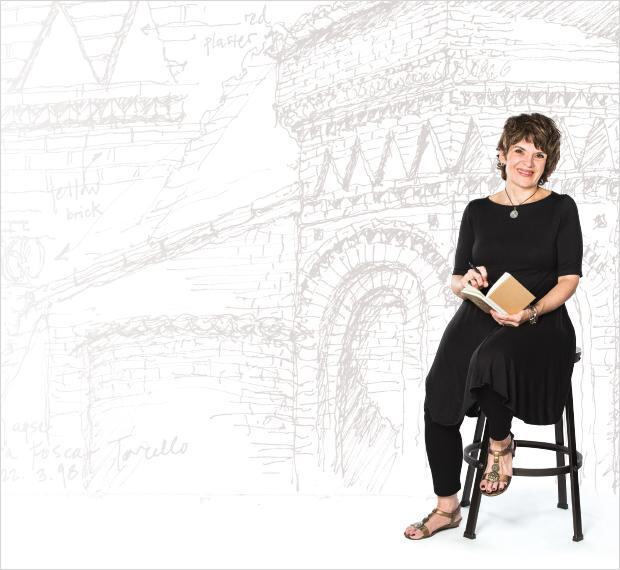- October 06, 2014
- Photo by John T. Consoli
- Drawings Courtesy of Michele Lamprakos
It was the lowly silkworm that led Michele Lamprakos to spend three decades studying architecture and material culture in the Middle East and the Mediterranean. The assistant professor of architecture and historic preservation paused during a trip to Spain to spin that tale and talk to Terp.
TERP: You’re exploring the history of one of the world’s most bizarre buildings. Why?
Lamprakos: I’m researching the Mosque-Cathedral of Cordoba. I can see the baroque bell tower that covers the ancient Islamic minaret from my balcony. It’s the only mosque that wasn’t destroyed when the Christians conquered Spain. Instead, they inserted a cathedral in the center. Why would any architect do that? It’s a story with incredible twists, right up through the 20th century.
TERP: When did you start working in the Islamic world?
Lamprakos: Right out of college, I went to Cairo as a development worker. I had the opportunity to work on kind of a crazy project to revive the cottage silk industry. Women and kids would pick leaves from mulberry trees in their yards and feed them to silkworms so they would form cocoons. Reelers would boil the cocoons, unreeling fine silk thread; women would take the waste and spin it into yarn. My Greek grandmother remembered doing the same thing when she was a child. It was a way for rural women to supplement their income. Seeing how that material culture had the potential to transform people’s lives led directly to my interest in architecture.
TERP: Architecturally, what’s your favorite area of the Middle East?
Lamprakos: Yemen is the most incredible country in the region in this respect. The settlements are like Italian hill towns; materials vary from region to region, mostly fired brick in the north and mud brick in the south. Many of the settlements are threatened by development pressures or abandonment. Working in the developing world changes the whole nature of preservation. It’s not a refined, effete exercise—it’s about maintaining the everyday environment. We can learn a lesson from this. How do we maintain buildings? How do we transform them?
TERP: Where should I go if I want to see great Islamic architecture?
Lamprakos: The problem since the Arab Spring is where you can go safely. Yemen and Syria would be on the top of my list, but tragically so much of Syria has been destroyed. Morocco is fantastic and hasn’t really seen civil unrest. Fez is the jewel in the crown, the first city in the region to become a World Heritage site, in 1981. Marrakesh is spectacular but very gentrified, unfortunately. The oasis region in the south is incredibly beautiful and lesser known to Americans. Wherever I go, my favorite thing to do is to walk around and sketch and think about how the cities and buildings got to be the way they are.
Issue
Fall 2014Types
InnovationTags
Faculty Q&A